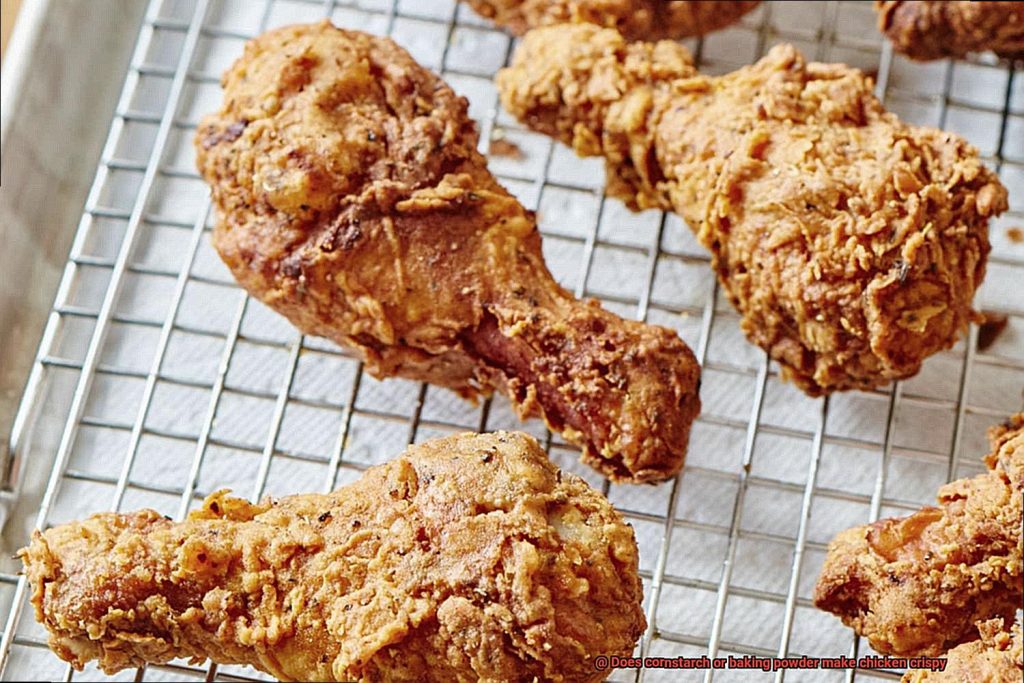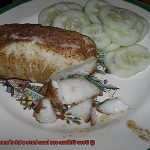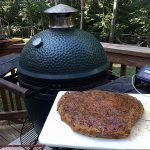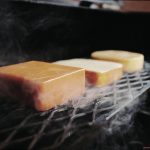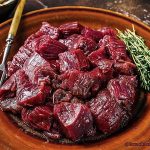TCraving that perfect, crunchy chicken? Wondering if cornstarch or baking powder holds the key to crispy bliss? Well, my friend, you’ve come to the right place. Today, we’re diving into the world of crispy chicken and unraveling the tantalizing differences between these two pantry powerhouses.
Cornstarch, with its powdery texture, has long been hailed as a secret weapon for achieving that coveted crunch. But hold on tight because baking powder, usually known for fluffy cakes and biscuits, has a surprising role in creating irresistible crispiness. So how do these culinary superheroes stack up when it comes to crispy chicken?
Join us on this mouth-watering adventure as we uncover the magic behind these ingredients’ transformative powers. We’ll explore their absorption abilities, their browning prowess, and even delve into the science behind their reactions. Get ready to take your crispy chicken game to new heights.
Whether you’re a seasoned home cook or an adventurous foodie looking for answers, this exploration will equip you with all the knowledge you need. So buckle up, prepare your taste buds for a wild ride, and let’s discover whether cornstarch or baking powder emerges as the ultimate crispy champion. Stay tuned for some seriously delicious revelations coming your way.
Contents
How Does Cornstarch Create a Crispy Texture?
Cornstarch, a versatile ingredient, is the secret to achieving a crispy texture on chicken. Through a series of fascinating mechanisms, cornstarch works its magic to transform your chicken into a delectable delight. Let’s delve into the science behind this culinary marvel.
Firstly, cornstarch undergoes a process called gelatinization when exposed to heat. This wondrous transformation turns the starch molecules into a gel-like substance. It’s this gel formation that plays a crucial role in creating that desired crispy texture you crave.
But that’s not all. Cornstarch possesses a remarkable ability to absorb moisture. When applied to the chicken, it eagerly soaks up any excess moisture on the surface, ensuring that dreaded sogginess stays far away. By absorbing moisture, cornstarch becomes your trusty ally in the pursuit of crispiness.
Now, here comes the steamy part. As the chicken cooks, the moisture absorbed by the cornstarch combines with it, resulting in the formation of steam. This steam performs a vital task – it gently separates the layers of the cornstarch coating, granting your chicken a light and airy texture that will leave your taste buds dancing with joy.
But wait, there’s more. Cornstarch acts as a protective shield for your chicken. When applied, it forms a thin layer that serves as a barrier between the meat and the oil. This ingenious shield traps moisture inside the chicken while allowing it to cook evenly and develop that enticingly crispy exterior you can’t resist.
Another advantage of using cornstarch is its lower protein content compared to flour. This lower protein content reduces the likelihood of gluten formation when mixed with liquids. And why is this important? Because gluten formation can lead to a tougher texture in fried foods. By opting for cornstarch instead of flour, you ensure that your chicken boasts a lighter and crispier coating.
It’s worth mentioning that while cornstarch may not provide a burst of flavor on its own, fear not. You can enhance the taste by pairing it with other seasonings like salt, pepper, garlic powder, or paprika. These delightful companions will elevate your crispy creation to new heights while maintaining its unparalleled crispiness.
How Does Baking Powder Create a Crispy Texture?
Baking powder, with its unique combination of ingredients, acts as a culinary magician when it comes to creating a crispy texture. By absorbing moisture, producing gas, and promoting browning, this versatile ingredient transforms ordinary dishes into tantalizing treats that are both crunchy and flavorful.
Firstly, baking powder’s moisture-absorbing agent, such as cornstarch, plays a crucial role in removing excess moisture from the surface of the food. This is important because excessive moisture can hinder browning and crispiness. By drawing out the moisture, baking powder creates a drier surface that promotes better browning and crispiness during cooking.
Secondly, baking powder’s chemical reaction produces carbon dioxide gas when combined with other ingredients. This gas becomes trapped in the batter or coating, forming air pockets. These air pockets contribute to a light and airy texture while making the surface more porous. As heat is applied, these air pockets expand further, resulting in a delightful crunch that is characteristic of a crispy exterior.
Furthermore, baking powder’s alkaline nature aids in promoting the Maillard reaction. This reaction occurs between amino acids and reducing sugars when exposed to heat, creating new flavor compounds and a desirable brown color on the food’s surface. The Maillard reaction is essential for achieving a crispy and flavorful crust that adds depth and complexity to the dish.
While baking powder is an important factor in creating crispiness, it is important to note that it is not the only one. Factors such as cooking temperature, cooking time, and proper seasoning also play significant roles in achieving the desired texture. It is crucial to follow specific recipes or consult trusted sources for guidance on using baking powder for grilling to achieve optimal crispiness.
Differences Between Cornstarch and Baking Powder
Cornstarch and baking powder are two common ingredients used in cooking and baking, but they have distinct characteristics and purposes. Understanding the differences between cornstarch and baking powder is essential for achieving the desired results in your culinary endeavors.
First, let’s talk about composition. Cornstarch is derived from corn kernels and is made up of primarily starch molecules. It is a fine white powder that is flavorless and odorless. On the other hand, baking powder is a mixture of several ingredients, including baking soda, cream of tartar, and a moisture-absorbing agent such as cornstarch. These components work together to create a leavening effect when exposed to heat or moisture.
Now, let’s discuss the purpose of these ingredients. Cornstarch is mainly used as a thickening agent in various recipes. When mixed with cold liquid, it forms a smooth slurry that can be added to soups, sauces, and gravies to thicken and enhance their texture. It acts like a backstage magician, quietly working its magic behind the scenes to create the perfect texture in your dishes.
On the other hand, baking powder, as its name suggests, is primarily used as a leavening agent in baking. It helps dough or batter rise by releasing carbon dioxide gas when exposed to heat. This results in a lighter and more fluffy texture in baked goods. It’s like a secret ingredient that transforms your cakes and muffins into airy delights.
When it comes to achieving a crispy texture on chicken or other fried foods, cornstarch and baking powder can both be used, but their methods and outcomes differ. Cornstarch is commonly used in Asian-style recipes for creating a crisp coating on meats. It absorbs moisture from the surface of the food, creating a barrier that helps to retain crispness during frying. Baking powder, while not typically used alone for crisping purposes, can be combined with other ingredients like flour or cornstarch to contribute to a crispy coating. Its leavening properties help create air pockets within the coating, resulting in a lighter and crunchier texture when fried.
In terms of flavor and appearance, cornstarch is relatively neutral. It doesn’t add any significant taste to your dishes and preserves the natural flavors of the ingredients. It also creates a translucent and glossy appearance when used as a thickening agent. Baking powder, when used in appropriate quantities, does not contribute a distinct flavor to the food. However, if too much baking powder is used, it can leave a bitter taste. It does not affect the appearance of the food significantly.
Pros and Cons of Using Cornstarch for Crispy Chicken
Using cornstarch as a coating for crispy chicken has several pros and cons. Let’s start with the benefits:
- Enhanced crispiness: Cornstarch is known for its ability to create a crispy texture when used as a coating for fried foods like chicken. The thin layer of cornstarch turns golden brown and crunchy when fried, providing a satisfying crunch with every bite.
- Light and airy coating: Unlike traditional flour coatings, cornstarch creates a lighter and airier coating on chicken. This results in a less heavy and greasy texture, allowing the natural flavors of the chicken to shine through.
- Gluten-free option: Cornstarch is naturally gluten-free, making it an excellent alternative for individuals with gluten sensitivities or celiac disease. It allows them to enjoy crispy chicken without sacrificing flavor or texture.
- Improved browning: Cornstarch aids in achieving a deep and even browning on chicken, giving it an appetizing appearance. This visually appealing aspect adds to the overall enjoyment of the dish.
However, there are also some drawbacks to using cornstarch for crispy chicken:
- Less flavor absorption: Unlike flour, cornstarch does not absorb flavors as effectively. While this can be advantageous for some dishes where the focus is on the natural taste of the chicken, it may result in a lack of flavor depth when using marinades or seasonings.
- Potential for excessive crispiness: Due to its high starch content, using too much cornstarch can lead to an overly crispy texture that borders on being dry or chalky. It is crucial to find the right balance to maintain a desirable level of crispness without compromising the juiciness of the chicken.
- Limited browning control: Cornstarch tends to brown quickly when exposed to high heat, which can be both an advantage and a disadvantage. While it contributes to achieving a beautiful golden color, it requires careful monitoring during cooking to prevent burning or uneven browning.
- Nutritional considerations: Cornstarch is primarily composed of carbohydrates and lacks significant nutritional value. While it can contribute to the texture of crispy chicken, it does not provide the same nutritional benefits as other coating options, such as whole wheat flour or breadcrumbs.
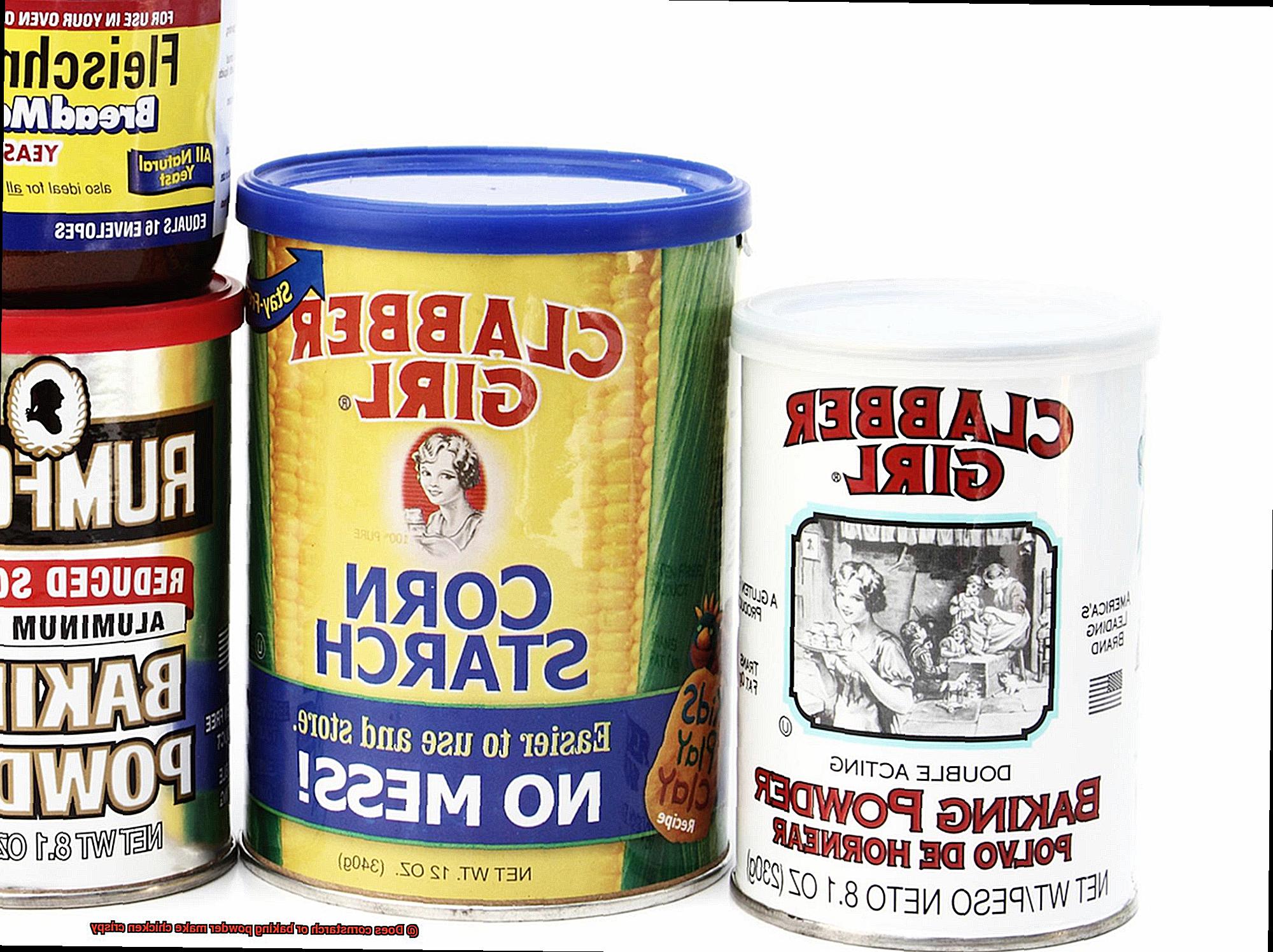
Pros and Cons of Using Baking Powder for Crispy Chicken
Using baking powder for crispy chicken can be a game-changer for those who love the perfect balance of tenderness and crunch. Here are some pros and cons to consider when using baking powder for crispy chicken:
Pros:
- Crisp and golden exterior: Baking powder’s alkaline nature helps break down proteins in the chicken skin, resulting in a more tender and crispy texture. It also aids in browning, giving the chicken a desirable color.
- Reduced cooking time: The chemical reaction that occurs when baking powder is heated produces carbon dioxide gas, creating air pockets in the chicken skin. This speeds up the cooking process and ensures even cooking throughout.
- Enhanced flavor profile: Baking powder adds a subtle tanginess to the chicken, enhancing its overall flavor profile without overpowering it.
Cons:
- Unpleasant taste if used excessively: Using too much baking powder can result in an unpleasant taste. It’s important to use it in moderation and follow a recipe or guideline to avoid overpowering the flavor of the chicken.
- Not suitable for dietary restrictions: Baking powder typically contains sodium bicarbonate, which can be high in sodium. People following low-sodium diets or with certain health conditions may need to limit their intake of baking powder or find alternative methods for achieving crispy chicken.
- Inconsistent results: Factors such as the type and quality of the chicken, cooking temperature, and cooking time can all affect the outcome when using baking powder. It may require some experimentation and adjustment to find the right combination for achieving the desired level of crispiness.
- Alternative preferences: Some people prefer a more natural approach to cooking and may choose to avoid using baking powder altogether. They may opt for alternative methods such as using cornstarch or other ingredients to achieve crispy chicken.
The Amount of Cornstarch or Baking Powder Used Matters
Achieving the perfect texture and crispiness of grilled chicken can be a challenge, but understanding the role of cornstarch and baking powder in this process is key. These ingredients can make a significant difference in the outcome, ensuring that your chicken is both juicy and flavorful with a delightful crunch. So, let’s dive deeper into why the amount of cornstarch or baking powder used truly matters.
Let’s start with cornstarch. When used as a coating for fried foods, cornstarch creates a light and crispy texture that we all love. It acts as a moisture absorber, forming a protective barrier on the chicken’s surface. This barrier not only seals in flavors and juices but also aids in creating that satisfying crunch we crave. However, it’s important to strike the right balance. Too little cornstarch may fail to provide enough coating to achieve crispiness, while too much can result in a heavy and clumpy exterior that detracts from the overall experience. As a general guideline, aim for about 1 tablespoon of cornstarch per pound of chicken, but feel free to adjust according to personal preference and the recipe at hand.
On the other hand, baking powder plays a different role in achieving crispiness; it is not typically used as a coating for fried chicken but can still contribute to its texture when used correctly. Baking powder contains both an acid and a base, which react when exposed to moisture and heat. This reaction releases carbon dioxide gas, creating bubbles that help lift and separate the coating from the chicken’s surface. The result? A lighter and crispier texture that enhances the overall eating experience. However, caution is necessary when using baking powder. Too much can lead to an undesirable taste and an overly puffy coating that lacks balance. Aim for approximately 1 teaspoon of baking powder for every 1 cup of flour or other dry ingredients specified in your recipe.
While the amount of cornstarch or baking powder used is crucial, it’s equally important to consider other factors when grilling chicken. Frying temperature, cooking time, and the type of oil used all play a role in achieving the desired crispiness. By carefully following recipe instructions and making necessary adjustments, you can ensure that every bite of your grilled chicken is irresistibly crispy and delicious.
Tips for Achieving the Perfectly Crispy Chicken
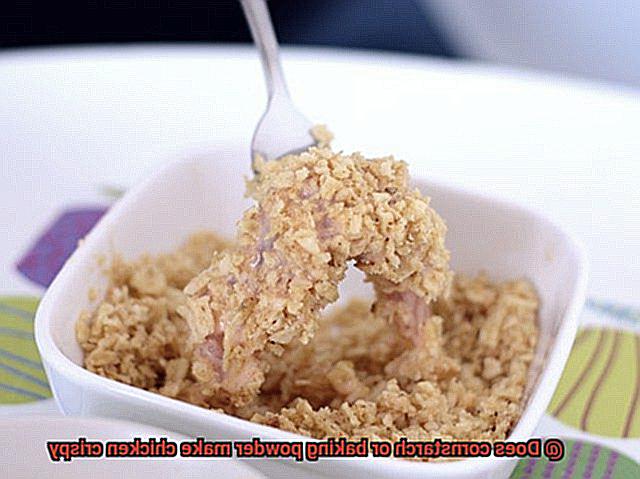
- Properly Season the Chicken: Start by generously seasoning the chicken with salt and any desired spices. This not only adds flavor but also helps to draw out moisture, resulting in a crispier texture. Don’t be shy with the seasoning – it’s what brings the chicken to life.
- Use a Dry Brine: To enhance flavor and moisture retention, try dry brining the chicken in a salt mixture overnight. However, before cooking, make sure to pat the chicken dry with paper towels to remove excess moisture. Moisture on the surface of the chicken can prevent it from achieving that perfect crispiness.
- Dredge in Flour or Cornstarch: For an extra crispy outer layer, many recipes suggest dredging chicken pieces in flour or cornstarch before cooking. This additional layer creates a barrier between the chicken and the cooking oil, preventing moisture from seeping into the coating. The result is a delightfully crunchy texture that will satisfy any craving.
- Opt for Baking Powder: If you’re looking for an alternative to flour or cornstarch, consider using baking powder. When mixed with salt, baking powder creates a dry and alkaline surface on the chicken, giving it that coveted crispy exterior. Just remember not to use too much baking powder, as it can leave a bitter taste.
- Allow Time for Air Drying: After dredging the chicken, let it sit uncovered in the refrigerator for about 30 minutes before cooking. This allows the coating to dry out slightly, promoting crispiness during cooking. Think of it as marinating the chicken in crispiness – it’s a step that should not be skipped.
- Use High Heat Cooking Methods: To achieve maximum crispiness, it’s best to use high heat cooking methods like frying, grilling, or broiling. These methods quickly cook the chicken and create a golden brown crust that will make your taste buds dance with joy. Don’t be afraid to turn up the heat – the reward is worth it.
- Monitor Oil Temperature: If you’re frying the chicken, make sure the oil temperature is hot enough (around 350°F/180°C) before adding the chicken. Adding chicken to oil that’s not hot enough can result in a greasy and less crispy texture. So, keep an eye on that thermometer and wait for the oil to reach its optimal sizzling point.
- Avoid Overcrowding: When cooking chicken, it’s important to give each piece enough space to cook evenly. Overcrowding the pan or grill can cause the chicken to steam instead of crisp up. Cook the chicken in batches if necessary – your patience will be rewarded with perfectly crispy goodness.
- Use a Wire Rack: If you’re baking the chicken in the oven, place a wire rack on top of a baking sheet to elevate the chicken. This allows air circulation around the chicken and prevents it from becoming soggy on the bottom. Elevate your cooking game with this simple but effective trick.
- Finish with High Heat: For an extra crispy finish, increase the heat during the last few minutes of cooking. This helps to further brown and crisp up the chicken, adding that desired crunch that will have everyone asking for seconds.
Conclusion
In conclusion, both cornstarch and baking powder can contribute to making chicken crispy.
Cornstarch creates a thin and delicate coating that adds a satisfying crunch to the chicken, while baking powder helps create a light and airy texture. However, the choice between the two ultimately depends on personal preference and desired outcome.
Whether you prefer a more traditional or innovative approach to achieving crispy chicken, experimenting with both cornstarch and baking powder can lead to delicious results.

